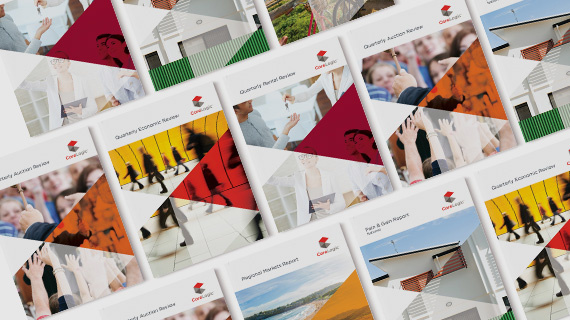PHOTO: Roy Morgan CEO Michele Levine
New research has brought to light a record-breaking number of Australians facing the risk of mortgage-related financial stress, with particular concern revolving around the “extremely at risk” category.
The most recent study by Roy Morgan reveals that the population falling under the “extremely at risk” classification has more than doubled, now encompassing well over one million mortgage holders, a surge that commenced with the escalation of interest rates last year.
https://propertynoise.co.nz/au/theres-been-a-dire-prediction-about-interest-rates-that-no-aussie-wants-to-hear/
This development coincides with the identification of 1.57 million Australians now categorized as “at risk” of encountering mortgage stress, stemming from the twelve interest rate hikes over the past year. This figure corresponds to 30.2 percent of mortgage holders throughout the country.
Roy Morgan employs specific criteria for assessing risk levels, deeming individuals “at risk” when their mortgage repayments exceed a certain percentage of household income, and classifying them as “extremely at risk” when even the interest-only portion surpasses a particular proportion of household income. It’s important to note that this data was collected from June to August, which witnessed a single interest rate rise, yet it is described as “a new record high” for those at risk in the report.
https://propertynoise.co.nz/au/dynamic-duo-in-fashion-dive-into-100-million-real-estate-investment/
Roy Morgan’s CEO, Michele Levine, highlights, “This represents a substantial increase of 759,000 since the Reserve Bank of Australia (RBA) began a record-breaking series of interest rate increases in May 2022. Of even more concern is the rise in mortgage holders considered ‘extremely at risk,’ now estimated at 1,066,000 in August 2023—a new record high. This figure has more than doubled since the RBA began raising interest rates, representing an increase of over 580,000 mortgage holders.” Levine also underscores that the RBA’s decision to keep interest rates unchanged in recent months has occurred in the context of reduced inflation compared to earlier this year, but there are growing indications that higher interest rates are eroding household savings.
Although the report notes that mortgage stress figures are still below the all-time high of 35.6 percent reached during the Global Financial Crisis 15 years ago, this is partly attributed to the larger size of the Australian mortgage market.
https://propertynoise.co.nz/au/james-packer-lists-beverly-hills-mansion/
Levine suggests that despite widespread speculation that the RBA may not further raise interest rates, the low Australian Dollar and elevated petrol and energy prices contributing to inflation “may force their hand.” She adds, “If the RBA does raise interest rates this week by 0.25 percent, Roy Morgan forecasts mortgage stress is set to increase to over 1.65 million mortgage holders (31.4 percent) considered ‘at risk.'”
Australia’s Consumer Price Index (CPI) rose to 5.2 percent in August, marking the first uptick in the monthly annual inflation reading since April. Levine observes, “The monthly increase in inflation is concerning, but also not surprising as energy prices have increased rapidly in recent months. The average retail petrol price has increased by around 40 cents per litre since mid-July and averaged over $2 per litre for seven straight weeks since mid-August.” The Roy Morgan report underscores that while interest rate figures are significant indicators of mortgage stress, unemployment exerts the most substantial impact on income and mortgage stress.
https://propertynoise.co.nz/au/top-real-estate-agent-is-jailed-for-four-years-for-shocking-act-against-women-watch/
The latest Roy Morgan figures reveal an uptick in unemployment to 11 percent in August. The report emphasizes, “While all eyes are on interest rates, the greatest impact on an individual, or household’s, ability to pay their mortgage is not interest rates, it’s if they lose their job or main source of income.”















